This pretty little spring flower has an unfortunate reputation for preferring to grow on cowpats, which is why, despite being dainty and pretty, the Anglo Saxons used to call it ‘Cuslyppe’. ‘Cu’ meaning ‘Cow’, in Old English, and ‘Slyppe’ meaning ‘slop’ or ‘dung’.
Luckily for this little flower, it has plenty of other names to choose from: Key of Heaven, Culver Keys, Key Flower, Two in a Hose , Fairy Cups, Fairies’ Flowers, Fairy Favours, Milk Maidens, and, my personal favourite, Freckled Faces.
Similarly to the Foxglove, the references to fairies comes from the old belief that the dark orange, almost golden dots at the centre of the flower were put there by fairies and that the flowers had magical powers. These powers might not have been exactly magical, but they are full of vitamin C and would have magically helped anyone with a cold. In the world’s first encyclopaedia, Pliny (AD 23-79) had already described how Celtic Druids used it for bronchitis, insomnia (it does have a mild sedative effect) and for beautiful skin.
This last use was later confirmed by William Turner (1509-1558) physician, theologist and botanist, in his ‘A New Herball’. For driving wrinkles away, he wrote, women made a brew of cowslip flowers soaked in white wine with which they washed their faces. In the 17th century Culpepper also recommends it as a beauty treatment. He advised to make an ointment from the flowers to
“add to beauty, or at least restore it when it is lost”
It is still used in facial creams today.
Quite a few names for Cowslips refer to keys. This is the same in many languages. For example Sleutelbloem (Key Flower) in Dutch and Frühlings-Schlüsselblume (Spring Key Flower) in German. The pagans dedicated the flowers to the Goddess Freya and were ‘the keys’ to her palace which was full of treasure. By the Middle Ages treasure meant gold, silver and jewels. But a few millennia earlier the treasure referred to were insight, wisdom and spirituality.
When Christianity took over the ancient, pagan legend, the cowslips were dedicated to Saint Peter. A range of similar stories basically all come down to something like this: one day, Saint Peter, the keeper of the golden keys to heaven, dosed off in the early spring sunshine and dropped his keys. They fell to earth where a young girl playing in the meadow below found them. But when she tried to pick them up, they turned into flowers, Cowslips, or ‘Keys of Heaven’ in this case. The people in her village were impressed with this miracle and tended the flowers, which multiplied abundantly with their care, spreading all through the land.
John Gerard (1545- 1612) called the ‘Cowslip’, ‘Palsywort’. He noted it was used in medieval medicine to help cure paralysis. It was also said to strengthen the brain, prevent madness, headaches, and memory loss (always handy). Nicholas Culpepper (18 October 1616 - 10 January 1654) writes that it could stave off nightmares and hallucinations. He suggests adding the flowers to your bath water.
The last name for Cowslip that we shall touch on before explaining the Latin name, is ‘Culver Keys’. In Middle English, Culver meant ‘Dove’ and was used as a term of endearment for a lover. There were quite a few different rituals using ‘balls’ of cowslip flowers that could predict who you would marry, some of them highly complicated. One of the simpler ones was that you’d make your ball, throw it up in the air and catch it repeatedly, all whilst singing:
“Tisty Tosty tell me true, who shall I be married to?”
Then you’d call out the names of your potential love interests and the name you called out when you eventually dropped the ball, was the name of your future spouse. No cheating though!
Using wildflowers to predict your future husband or wife was especially popular amongst Victorians. And it wasn’t just cowslips they used, you could also use Yarrow, Ragged Robin and Red Clover in a variety of ways.
Primula is from the Latin word ‘Primus’ meaning the ‘first’ and ‘Veris’ means ‘springtime’, appropriate for this early blooming spring flower.
This newsletter is NOT a field guide for flower identification. It’s often difficult to tell the difference between harmless plants and poisonous plants and some flowers are rare and protected by law, so, NEVER pick or use any plants or flowers if you’re not sure about them.
illustrations and text ©Chantal Bourgonje






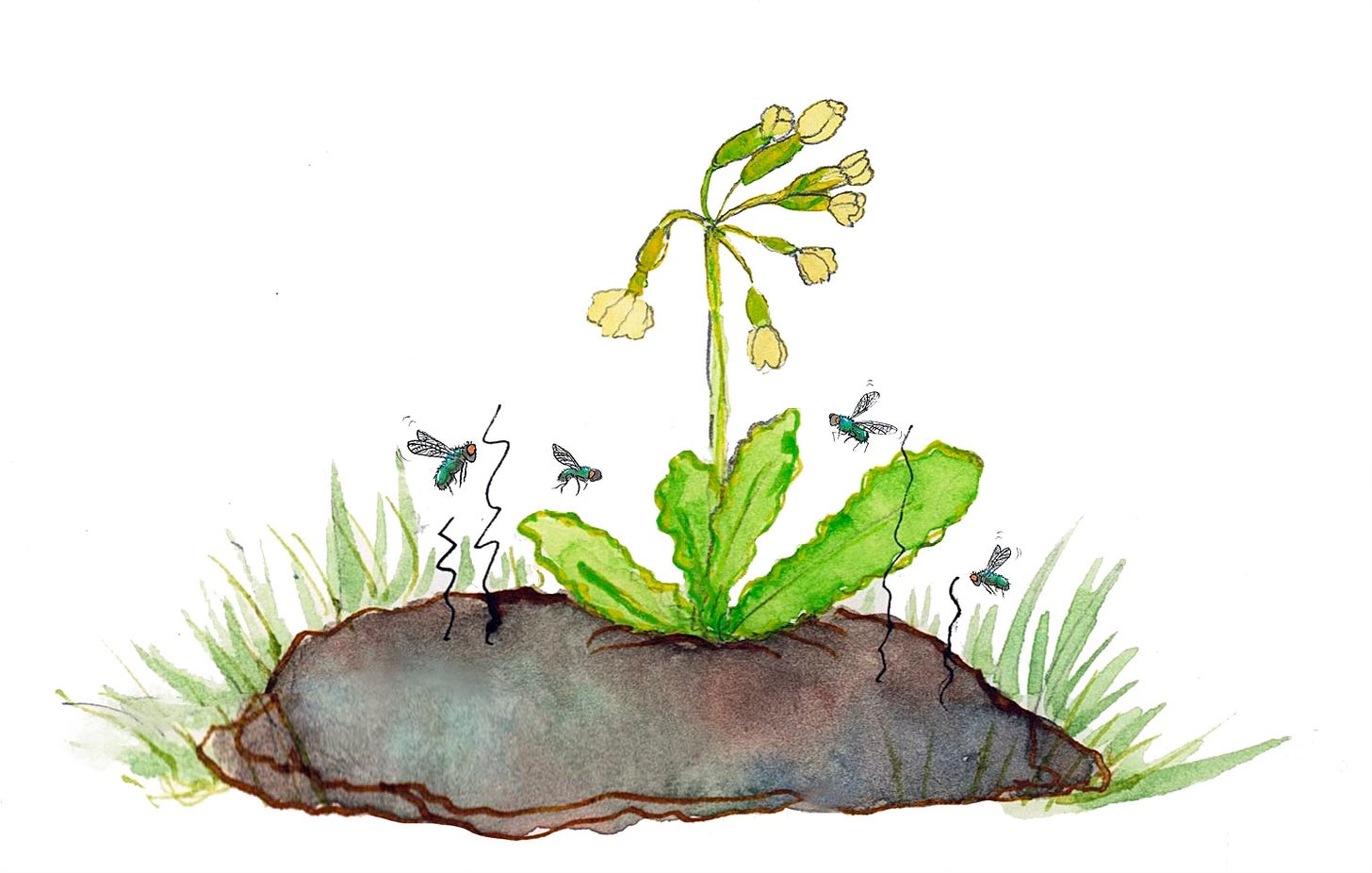
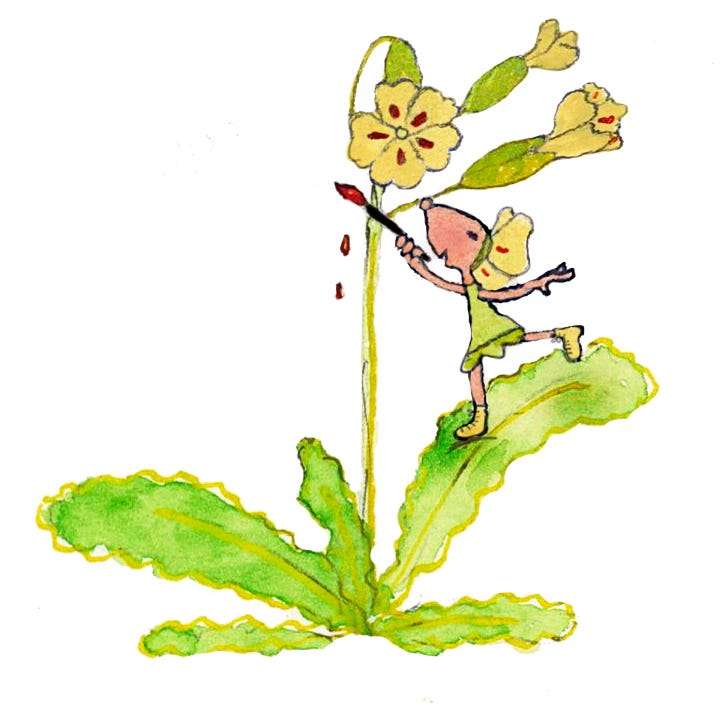
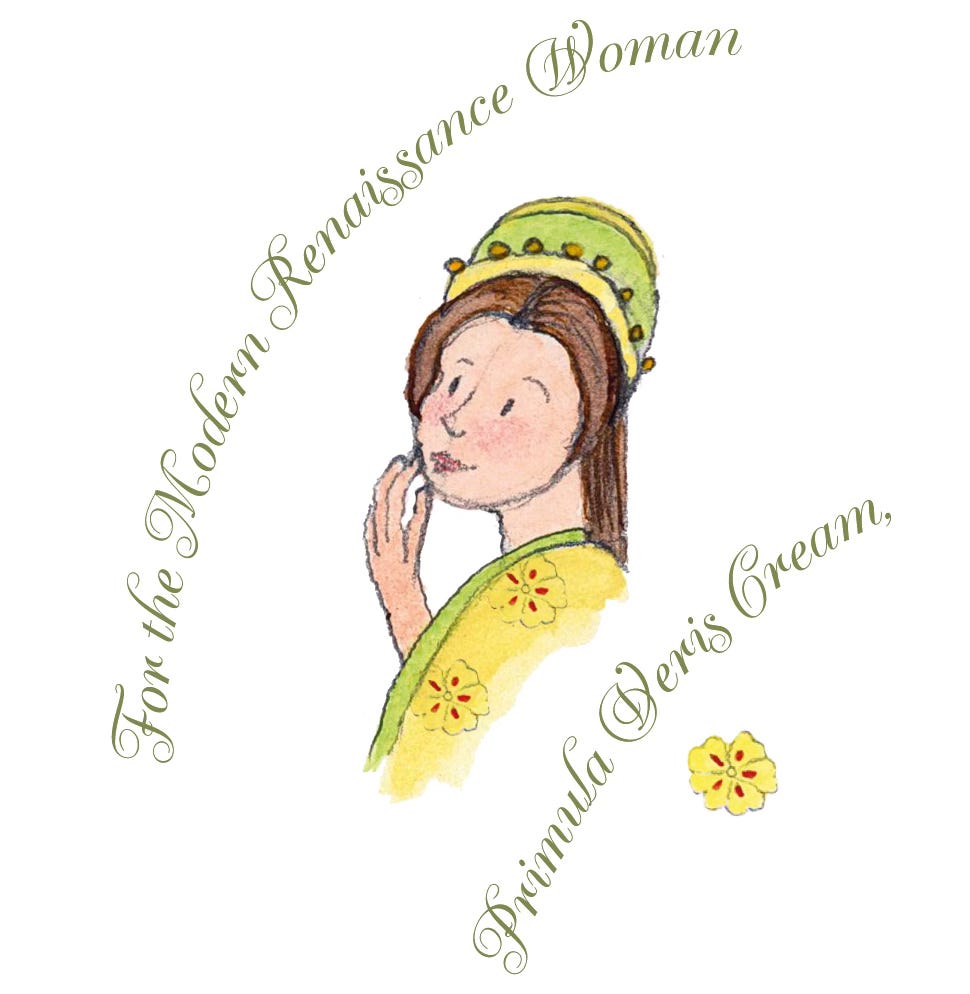
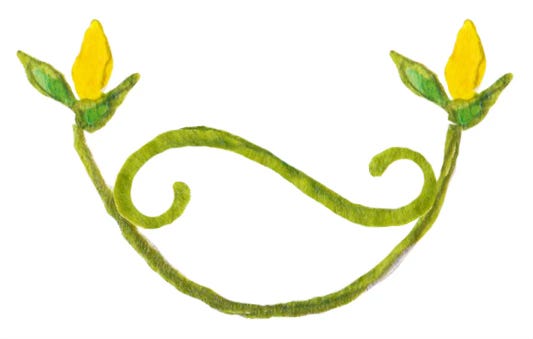
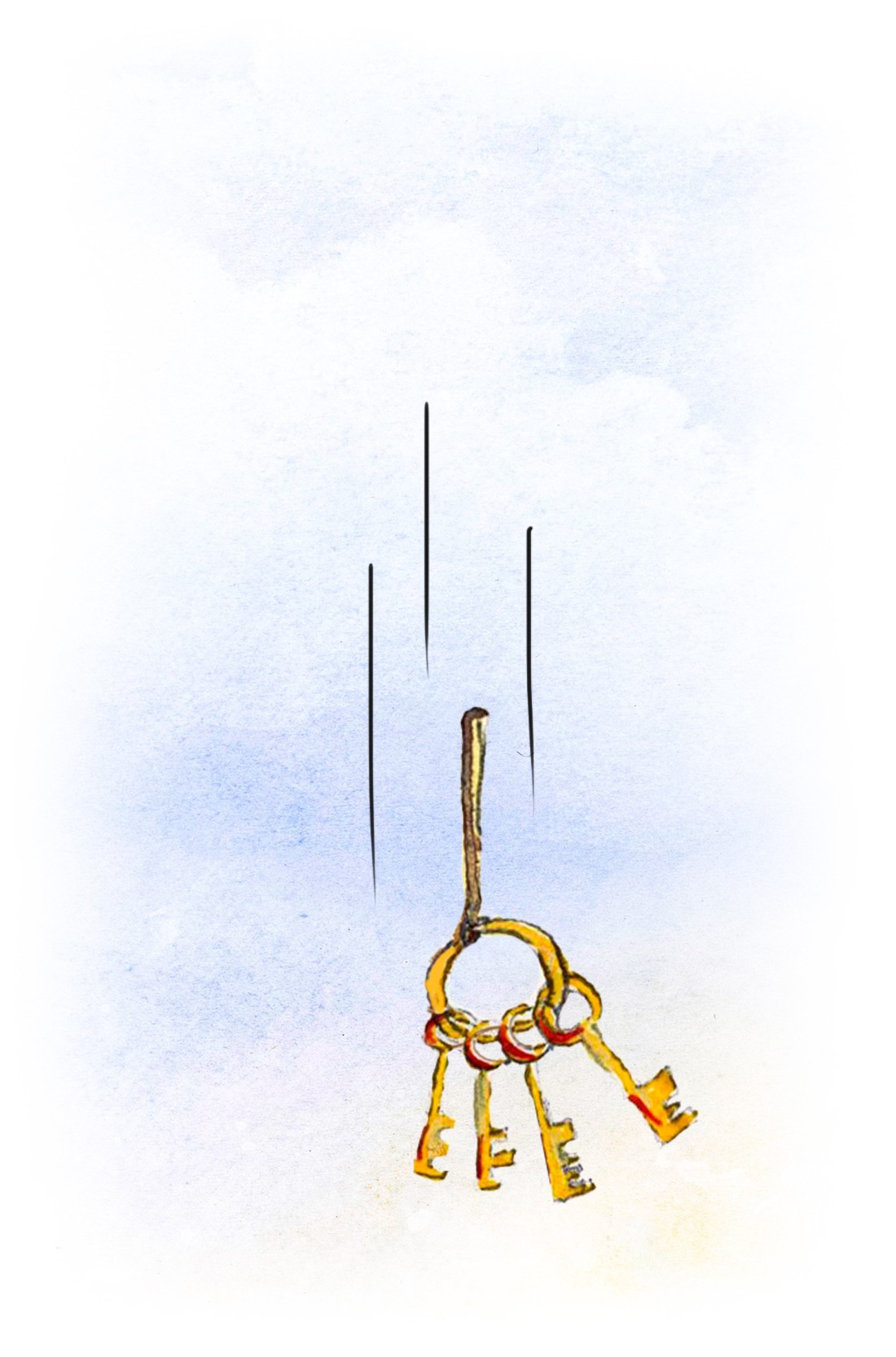
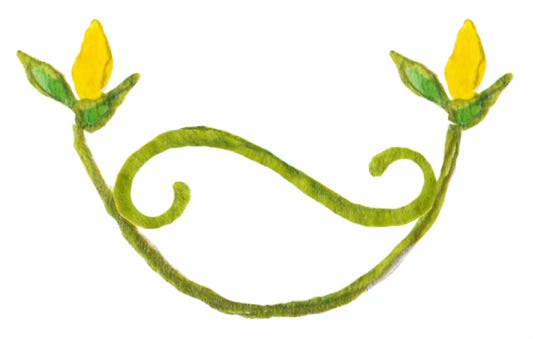

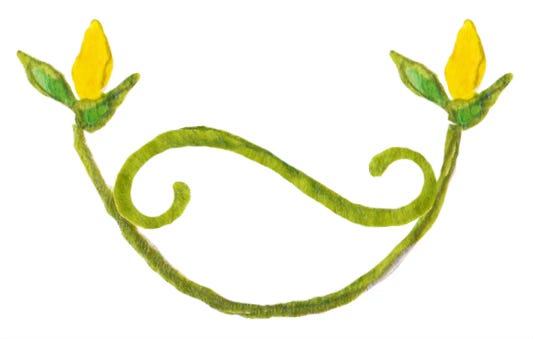

this is an amazing article. thank you!!!
Thank you so much for the restack!